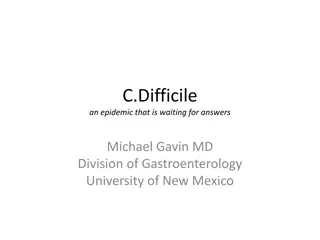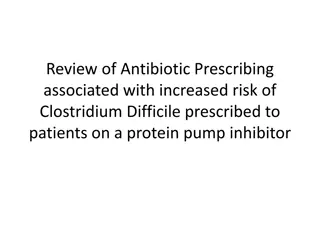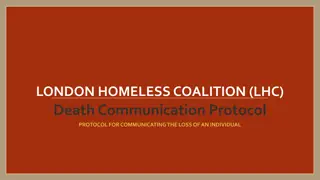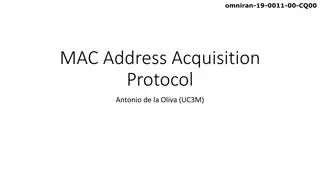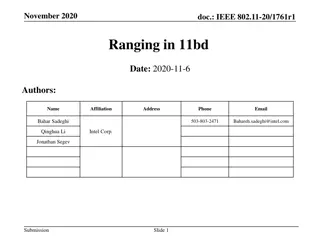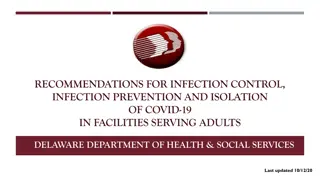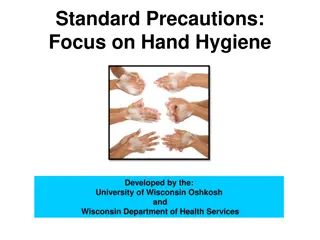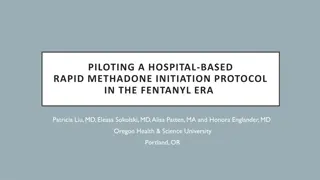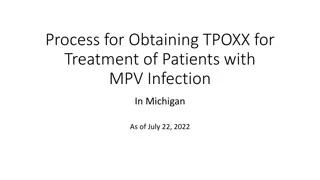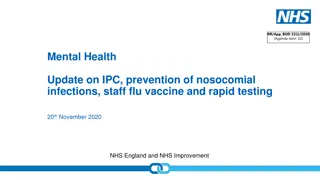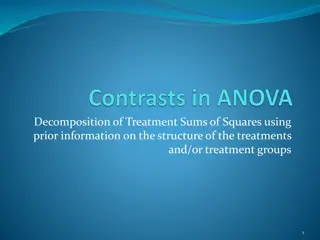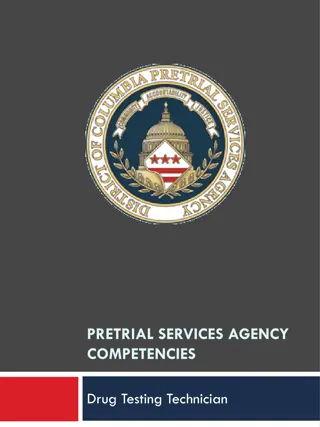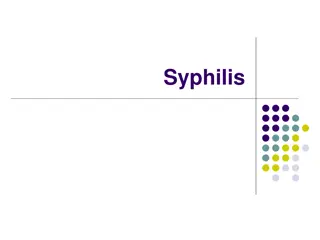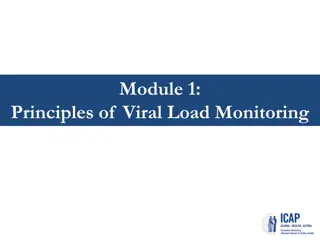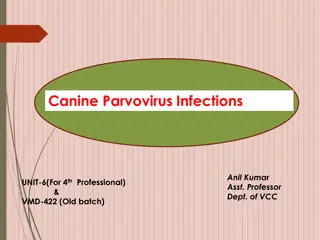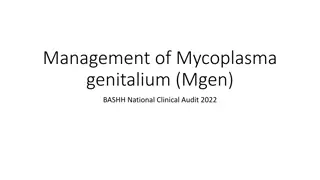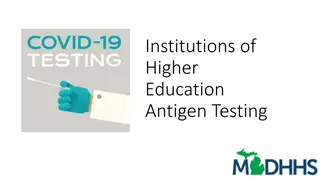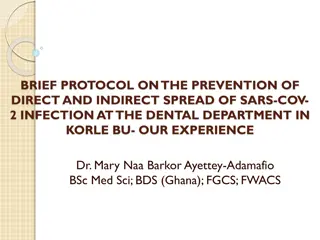Management of C. difficile Infection Testing and Treatment Protocol
Stony Brook has implemented a two-step testing algorithm for C. difficile infection using PCR and EIA tests to differentiate between active infection and asymptomatic carriage. Positive PCR results are further tested with EIA. The protocol includes criteria for CDI testing, specimen collection guidelines, and treatment recommendations. Consultation with ID or GI specialists is recommended for treatment planning.
Download Presentation

Please find below an Image/Link to download the presentation.
The content on the website is provided AS IS for your information and personal use only. It may not be sold, licensed, or shared on other websites without obtaining consent from the author. Download presentation by click this link. If you encounter any issues during the download, it is possible that the publisher has removed the file from their server.
E N D
Presentation Transcript
C. difficile Reflex testing based on ordering location Prepared by the Preventing C. diff Infection Workgroup Updated 5/24 1
Categorizing CDI Testing and Detection Beginning January 2, 2020, Stony Brook will be utilizing a two-step testing algorithm including a PCR (polymerase chain reaction) and EIA (enzyme immunoassay) for all Inpatient and ED locations. The PCR test is highly sensitive and specific test for toxigenic genes. It cannot distinguish between active infection and asymptomatic carriage The EIA test has a low sensitivity, but high specificity for the toxin production. It helps to determine an active infection or asymptomatic carriage The EIA test will result after a +PCR result in PowerChart Utilizing both PCR and EIA testing helps clinicians determine an appropriate treatment plan based on active infections or asymptomatic carriage.
Categorizing CDI Testing and Detection Two-step testing protocol 1. C. difficile toxin PCR (note: this is not available in the GI/diarrhea PCR panel) 2. Positive PCR results are reflexed to a C. difficile toxin EIA CDI testing is limited to attending physicians if the patient has any of the following: o < 3 bowel movements documented in the EMR o Recent laxative use in the past 48 hours o Prior CDI testing within the past 7 days Stool specimens that are not liquid will be rejected by the laboratory If patient has an ileus, rectal swab should be used for stool sample collection o For this specimen type please consult with the Molecular Diagnostics Laboratory at x4-3747
When to Reflex? PCR + EIA Reflex Testing How to Interpret your CD Test Results Table 1.
When to Reflex? PCR + EIA Reflex Testing Treatment Recommendations (preferred regimens highlighted in yellow) Table 2. *Bezlotoxumab, Rebyota, and Vowst are not on the hospital formulary and are not available for inpatient use. Note that fidaxomicin use for the initial episode of CDI has been associated with a 16% relative risk reduction in recurrent CDI. However, this needs to be balanced with the high cost expense of fidaxomicin therapy compared to oral vancomycin, which may ultimately impact on patient adherence. The duration of vancomycin pulse taper regimens may vary depending on clinical factors. Consultation with ID or GI is recommended.


